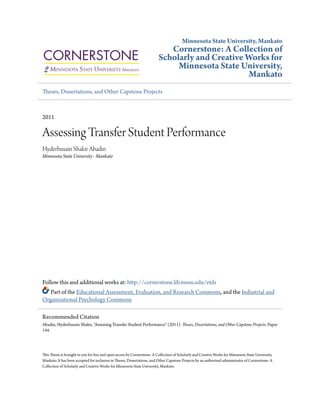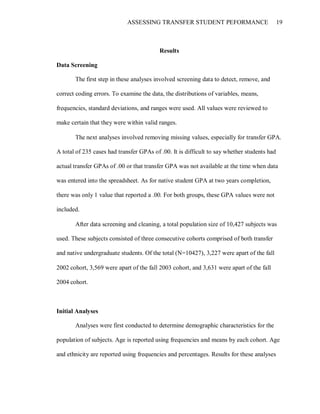This document is a thesis that assesses the performance of transfer students at Minnesota State University, Mankato. It begins by discussing societal, demographic, and university initiatives that have led to an increase in transfer students. It then defines transfer students and native students. The literature review shows that previous research has found transfer students generally have lower GPAs, retention rates, and graduation rates than native students. However, the thesis aims to compare the performance of transfer students and native students at Minnesota State University, Mankato.

















































